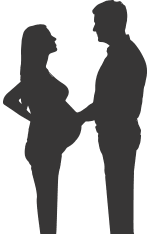Poor egg quality always has an origin
Poor oocyte quality is one of the main factors affecting female fertility. Despite common beliefs to the contrary, there is always a reason behind the deterioration of gamete quality. Note that in pathologies such as PCOS (Polycystic Ovary Syndrome) or Endometriosis, it can be treated in most cases. However, other circumstances such as age require a different strategy.
Egg ageing is a determining factor in ovulation quality, as age makes fertilisation more difficult and/or causes repeated miscarriages. In such cases, at Equipo Juana Crespo we focus our efforts on defining and selecting the best cycles to perform the egg retrieval. A stimulation strategy must also be planned to help us obtain the best oocyte.
Oocyte Quantity vs Oocyte Quality
It is important to be aware that egg quality and quantity do not always go hand in hand. Both conditioning factors should therefore be treated separately.
When talking about quantity, remember that women are born with a finite number of oocytes. Throughout a woman’s life and during her fertile years, consumption is inevitable up to menopause. This is known as the ovarian reserve. This reserve, i.e., the quantity, can be measured through analysis of the Anti-Müllerian hormone, along with other analytical tests such as FSH, estradiol or antral follicle count.
However, sometimes, even when there is good ovarian reserve when counted, these follicles are empty or do not develop normally, and the oocyte, which is the cell that must mature in the follicle wall each month until ovulation, does not grow or abnormalities are found in its DNA structure. This is what is referred to as poor egg quality.
Our procedures for poor egg quality
Depending on the underlying pathology of the patient with poor quality eggs, there are a series of specific procedures that our specialists prescribe. These procedures are applied before starting the stimulation cycle:
Treatments for ovarian quality
Personalised stimulation protocol with optimal cycle selection.
One of the keys to IVF (in vitro fertilization) treatment success for women with poor ovarian quality is the pre-puncture stimulation protocol.
After the goals of improving antral follicles and hormone levels have been achieved, a personalised stimulation protocol is initiated. This is closely tailored to the patient’s hormonal response.
Equipo Juana Crespo has as many stimulation protocols as we have people. The major difference is that, starting from a baseline strategy, treatments are customised to the patient’s response and findings.
FREQUENTLY ASKED QUESTIONS
Generally speaking, infertility or sterility. But this can also cause miscarriages in the first weeks of pregnancy because if the egg is abnormal, it will generate abnormal embryos.
Yes, you can get pregnant naturally or via assisted reproduction with poor quality eggs.
At the time of writing, there are no tests or analyses that reveal whether a woman’s eggs are good or poor quality in advance.
Certain pathologies or initial situations are scientifically known to have a direct impact on egg quality, such as endometriosis, chromosomal or genetic alterations, obesity and poor lifestyle habits, or women who have undergone aggressive pharmacological treatments. This doesn’t mean that these pathologies always cause poor quality eggs. However, there is a high probability that they do.
Does the Anti-Müllerian hormone test measure egg quality?
No. The Anti-Müllerian hormone test only provides an idea of a woman’s ovarian reserve when the test is performed. It offers partial information about quantity but not quality.





